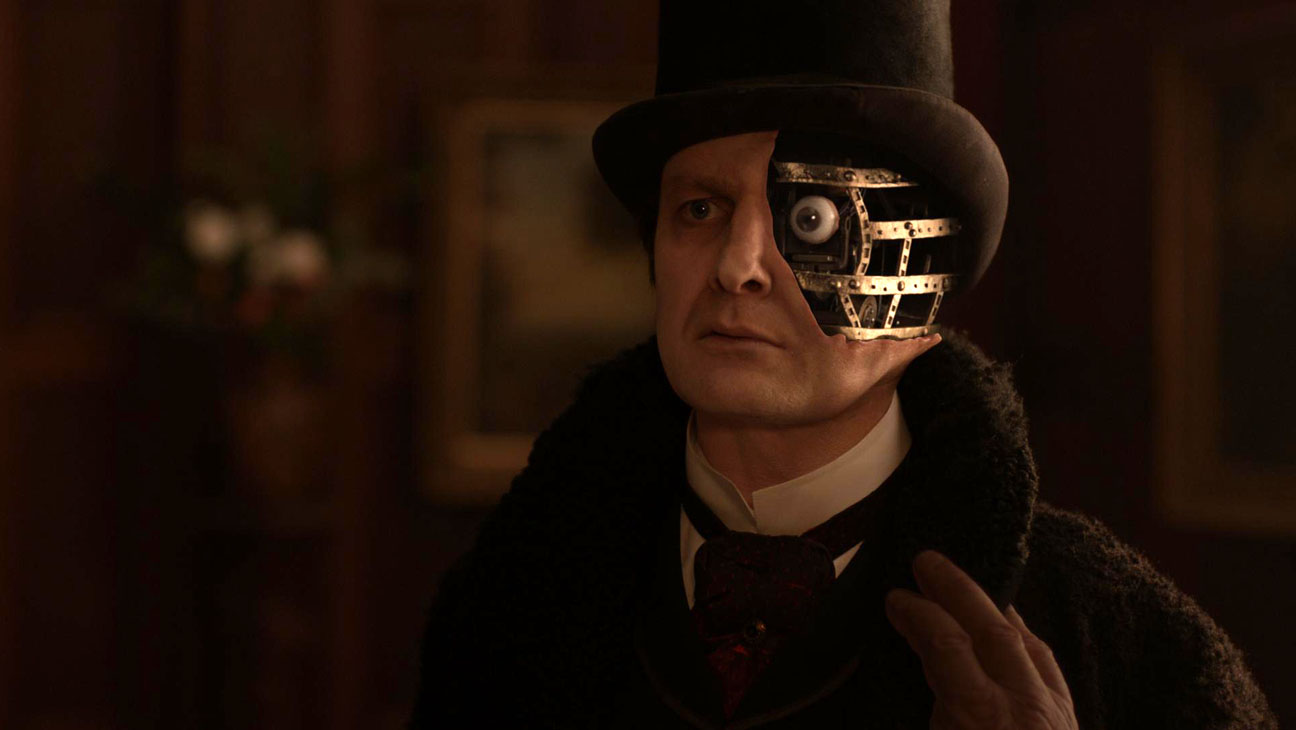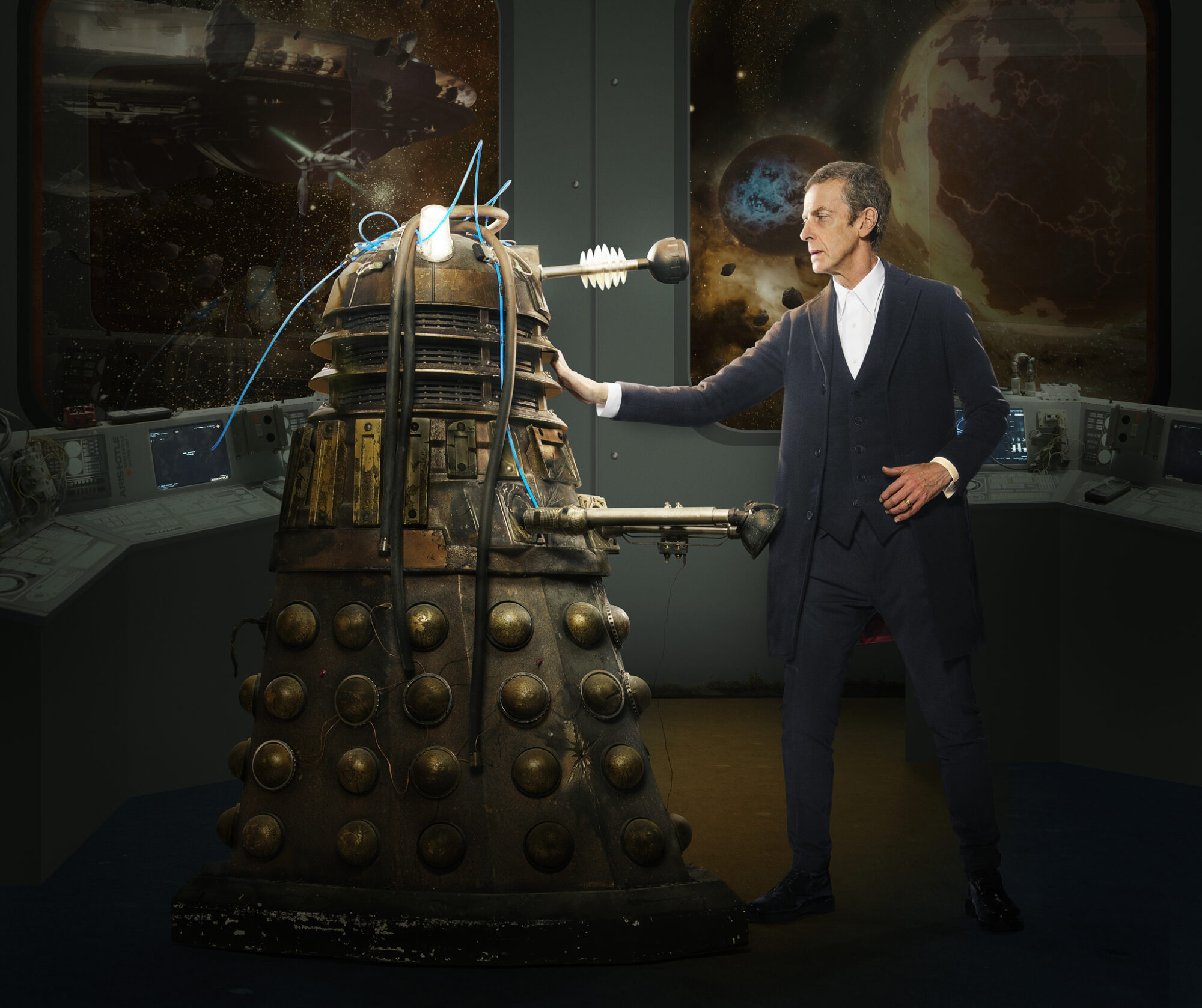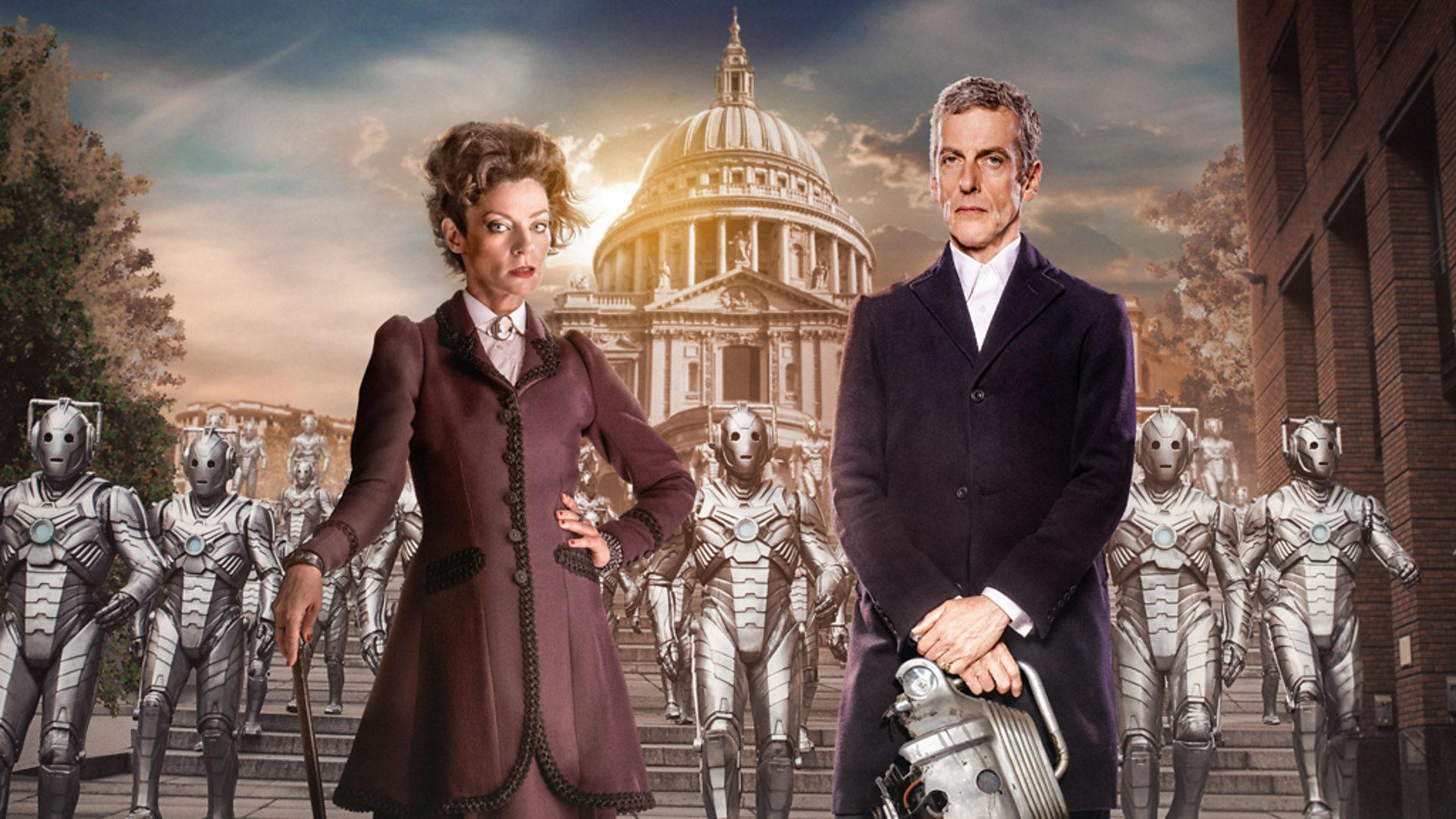Doctor Who Series 8 saw the show move in a whole new direction, with a darker tone and a brand new Time Lord in the shape of Peter Capaldi.
Steven Moffat surprised everyone in 2008 when he cast the youngest ever Time Lord in Matt Smith. But in 2013, he went in completely the opposite direction by handing the TARDIS keys to one of the oldest. Peter Capaldi was announced as part of a live event in Doctor Who‘s 50th anniversary year, and it’s fair to say that his casting was met with widespread approval.
The Twelfth Doctor made his debut in the 2013 Christmas special, but he didn’t have his first proper adventure until Doctor Who Series 8 began in the earnest the following autumn. Continuing the trend set by the 50th anniversary celebrations, Doctor Who Series 8 was simulcast in UK cinemas, and this felt appropriate given its longer-than-usual length, even if it wasn’t quite the size of a movie.
And the first episode ‘Deep Breath’ saw the Twelfth Doctor and Clara team up with the ever-popular Paternoster Gang in Victorian London as they investigated the mystery of the unexplained t-rex. But perhaps the most exciting aspect of this adventure was the fact that it brought back the clockwork droids – a ‘monster’ that hadn’t been seen since 2006’s ‘The Girl in the Fireplace.’ And their return was warmly welcomed by fans.

At the same time, it was clear that Doctor Who Series 8 was taking the series in the new direction. This was immediately apparent from the first trailer, which was darker and grittier in tone. There was even one scene where the Doctor, at the TARDIS controls, told his companion that he was taking her “into darkness.” In short, the series looked more like a horror show than the bombastic adventure series that it had been previously. Capaldi promised to bring more complexity, and a more adult feel.
And, certainly, his version of the eponymous Time Lord starts out in this vein. There are some particularly eyebrow-raising scenes in Doctor Who Series 8’s second episode ‘Into the Dalek’ where the Doctor makes a tasteless joke about one of their dead friends, saying that he can be found on the “top layer” in a vat of goo, “if you want to say a few words.”
Even the Daleks recognise this aspect of the Time Lord’s persona. “I see into your soul, Doctor,” one of them says. “I see beauty. I see divinity. I see hatred… I see your hatred of the Daleks and it is good.”

None of this is to say that the Twelfth Doctor isn’t afforded a few moments of levity in Doctor Who Series 8. Mark Gatiss’ ‘Robot of Sherwood’ is probably the most light-hearted of the series, and features some amusing interplay between the Time Lord and the famous Robin Hood, with the two of them engaging in a ridiculous sword fight near the start of the episode. The Doctor, of course, opts for a spoon rather than a cutlass.
‘The Caretaker’ by Gareth Roberts is also immensely entertaining. This particular episode from Doctor Who Series 8 plays on an idea from ‘Remembrance of the Daleks,’ where the Doctor is mistaken for a caretaker applicant at Coal Hill School. Here, Roberts examines what would happen if the Doctor did, indeed, become the caretaker of Coal Hill School, and the results are as manic as you would expect.
However, the majority of Doctor Who Series 8 hinges on the mysterious woman in Heaven played by Michelle Gomez – or, the place that she calls Heaven. Whenever key characters die in the series, they suddenly find themselves in an apparent afterlife, presided over by a decorous woman with an umbrella. “Welcome to Heaven!” she proclaims. This serves as Doctor Who Series 8’s over-arching story, and one that comes to a head in the penultimate episode.
The episode in question is ‘Dark Water’ and, in-keeping with the overall tone of Doctor Who Series 8, is as bleak and unnerving as one could imagine. The episode posits that people retain a physical connection to their bodies when they die, meaning that they experience the full pain of cremation if they are burnt. The Doctor is shown recordings of dead people pleading with their loved ones not to cremate them, and it’s possibly one of the most harrowing concepts ever used in Doctor Who.

All of this is part of the woman’s grand plan. She intends to use the dead humans’ remains to build a new army of Cybermen – and this woman just so happens to be a female incarnation of the Master, known as Missy. And the production team went to great lengths to keep this particular plot point a secret during the filming of Doctor Who Series 8, even going so far as to shoot a fake scene outside St Paul’s Cathedral in which the woman revealed herself to be the Rani.
Missy proved to be an immensely popular character, however, and returned for each of Peter Capaldi’s subsequent seasons.
Overall, there’s a general feeling with Doctor Who Series 8 that the production team were trying to achieve what had been previously attempted with Colin Baker – the idea of staring off with a gruffer, darker, less predictable Doctor who, over time, would soften as the layers were peeled back. This plan was aborted in the 1980s, as the BBC sacked Baker after two seasons, but they succeeded with Capaldi; there’s certainly a marked difference between the Doctor of ‘Deep Breath’ and the Doctor of his final episode. It’s up to you, dear reader, to determine how effective this concept was.
Still, there is much to love in Doctor Who Series 8, and it should be applauded for its brave tonal shift in the wake of the 50th anniversary celebrations.
What’s your favourite moment from this season? Let us know in the comments below.










Leave a Reply